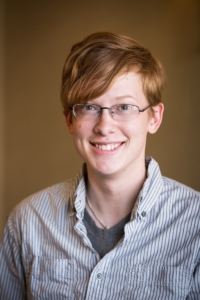Existing as a Trans Person with an Eating Disorder
When I first sought treatment for an eating disorder, I had no idea I was transgender.
When I tell people this, I’m usually met with incredulity. How could you not know you identified as a boy? That seems like something one usually has a pretty good handle on. In my case, I didn’t have the words to express what I was feeling internally. I didn’t know there was such a word for someone whose gender identity doesn’t agree with the gender they were assigned at birth.
Instead of reaching out and confronting these feelings, I hid. My eating disorder allowed me to control the parts of me I was too scared to show the world, the parts that were too masculine to exist in a feminine body, the parts that were scared that my parents would find out they didn’t have the perfect daughter they thought they had. It took me many more years before I was comfortable enough in myself to come out to the world and express myself as a queer transman.
Existing as a transgender individual with an eating disorder isn’t that much different than existing as a cisgender individual struggling with disordered eating. We all struggle with the societal pressures, triggers, and distorted self-image that comes with the development of an eating disorder. For transgender individuals, there can be an additional layer of challenge in the form of gender-related dysphoria.
Dysphoria in this context refers to a phenomenon experienced by many (but not all) transgender individuals in which we experience intense discomfort or anxiety due to the perceived discrepancy between our internal self-identity and physical body. Learning how to cope with these dysphoric thoughts has been one of my biggest sources of strength in my recovery process, and addressing these coping skills with transgender peoples battling against eating disorders cannot be emphasized enough.
There isn’t much out there in terms of research or cultural competency for members of the transgender community with eating disorders. When I had a setback in terms of disordered eating a few years ago, I had engaged in some self-discovery and was presenting as a trans man. One provider looked me in the eye and said, “Honestly? I can help you as a transgender person or as a person with an eating disorder. I’m not really sure how to combine the two.”
I have people ask me if I still think I would have developed an eating disorder if I had known about my transgender identity when I was younger. The answer for me is a resounding yes. My disordered eating habits are definitely complicated by the fact that they occur alongside my gender-related dysphoria, but many of my eating problems were centered around having some sort of control. Beginning my physical transition, in a way, has been the most exhilarating loss of control that I’ve ever experienced. You don’t really get to choose what changes occur when you begin physically transitioning or the order and speed in which they happen. Watching my body change and striving to keep myself cognizant that this transition is a journey.
The positive note to my earlier story is that I have since found a wonderful provider who helps me consider my eating disorder in the context of my transgender, queer identity. Neither of us are experts by any means, but she recognizes that this identity feeds so strongly into who I am as an individual and how I experience disordered eating. The world of eating disorder treatment and research needs more of this thoughtful consideration.
Allow folks to self identify their gender and sexuality on forms or when considering placements in groups or the like. Recognize that being trans doesn’t necessarily cause an eating disorder but does inform how that eating disorder is experienced. This validation and competency leads to blossoming of sense of self and strength in who people are as a transgender/gay/lesbian/bisexual/asexual/queer and that strength can make all the difference.
Luke Knudsen is a transgender activist in the Four Corners area dedicated to equality and acceptance for LGBTQ youth. In 2017, he was a co-chair of the Trevor Project Youth Advisory Council, advocating in his community for suicide prevention and mental health resources. He works with local groups to increase their outreach and services to youth in the Four Corners region and is working to increase support services to LGBTQ youth in underserved rural areas.
This content was originally published on Proud2bme.org in 2017.





